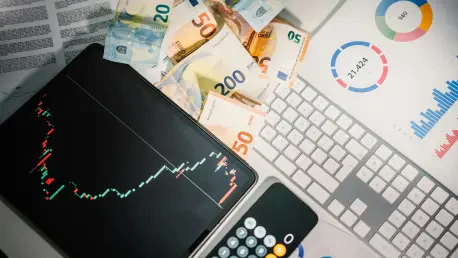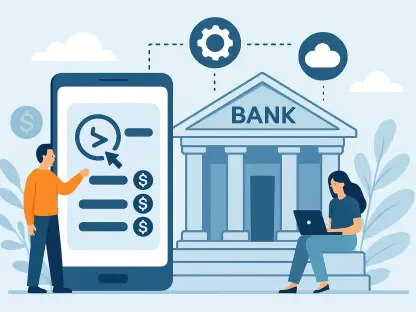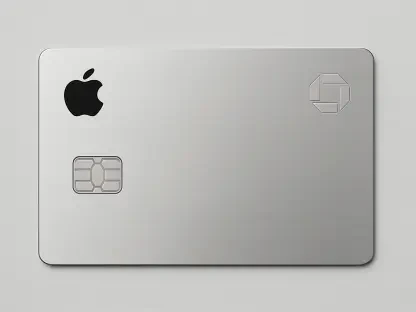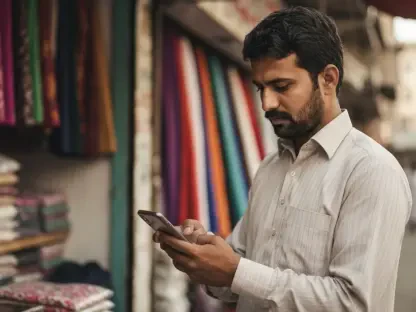In the bustling arena of technology-led economic transformation, mobile money stands as a formidable force, reshaping access to financial services worldwide. Its inception stems from the need to cater to individuals in regions lacking access to traditional banking infrastructure. Mobile money offers a solution by enabling users to conduct financial transactions with ease, utilizing text messages on mobile phones. This innovative service has transcended borders, catalyzing financial inclusion and empowering millions, particularly in areas like Sub-Saharan Africa, where conventional banking is sparse. As the number of mobile money accounts continues to rise, the global impact of this phenomenon is being felt across multiple facets of daily life, altering economies and lives alike.
The Growth Trajectory of Mobile Money
Evolution of Mobile Money Accounts
From its humble beginnings in 2010, with a mere 13 million accounts worldwide, mobile money has witnessed exponential growth, leading to over 640 million accounts by recent counts. Notably, the bulk of these accounts is concentrated in Sub-Saharan Africa, a testament to the widespread adoption and penetration of mobile technologies in the region. The allure of mobile money lies in its accessibility, removing the need for physical bank branches or even stable internet connections. A simple mobile phone signal suffices, breaking down geographic barriers traditionally associated with banking. This accessibility is increasingly substituting conventional banking methods, offering a form of financial liberation to underserved populations.
Factors Driving Adoption Rates
The proliferation of mobile phones directly influences the adoption of mobile money services, with a marked increase in account ownership seen in African nations. From 12% of the population in 2014 to 33% in the most recent years, countries like Ghana and Uganda have embraced mobile money eagerly. Contrastingly, places like Nigeria and Mauritius exhibit slower adoption rates due to varying infrastructure, mobile phone penetration, and regulatory climates. Such disparities highlight the significance of local conditions in the expansion of mobile money, underscoring its potential as a scalable model for financial inclusion that can adapt to specific regional challenges.
Benefits and Impacts of Mobile Money
Enhancing Financial Inclusion
Mobile money is instrumental in enhancing bank account ownership across Africa. By the current year, it facilitated more than half of adults in the region to possess a bank account, effectively doubling financial inclusion in nations such as Malawi and Togo. It provides a primary access point to financial services for the unbanked while offering an advantageous alternative for those with existing bank accounts. This dual role addresses a glaring economic disparity by bridging gaps, allowing unprecedented access to finance for populations previously excluded from formal banking sectors.
Transforming Employment and Mobility
Mobile money’s influence extends beyond individual economic empowerment to broader socioeconomic impacts, particularly in employment and mobility. With the assurance of secure and flexible transactions, people are more apt to explore job opportunities beyond their immediate locales. This is exemplified in Mozambique, where mobile money usage correlates with increased urban migration, leading to improved employment prospects and wages. By providing individuals with the autonomy to manage finances independent of geographic constraints, mobile money is facilitating shifts in labor patterns and fostering economic growth at both local and national levels.
Challenges and Solutions
Barriers to Access
Despite remarkable advancements, obstacles remain in the quest for universal mobile money access. One key barrier is the lack of ownership of mobile devices, closely tied to economic conditions that restrict purchasing power among low-income groups. Furthermore, the absence of necessary documentation such as identification cards hampers access. Many people across Sub-Saharan Africa lack formal identification due to challenges like prohibitive costs or the logistical difficulties associated with obtaining birth certificates. These barriers not only limit expansion but also hinder the full realization of mobile money’s potential in transforming financial access on a broader scale.
Addressing Access Limitations
To overcome these challenges, innovative solutions are being pursued. These include initiatives to increase the availability of affordable mobile phones, thus lowering entry barriers for underserved populations. Additionally, policies promoting accessibility to identification documents are crucial, such as developing streamlined processes that reduce costs and bureaucratic obstacles. Implementing tiered verification systems can further allow basic mobile transactions with limited documentation, facilitating gradual financial assimilation for users unable to fulfill standard regulatory requirements. Such strategies are pivotal to expanding mobile money’s reach and amplifying its impact on financial inclusivity.
Future Directions and Considerations
Revolutionizing Aid Distribution
Mobile money is revolutionizing the way foreign aid is delivered to recipients in developing areas. By minimizing intermediaries, financial support can be transmitted directly to those in need, increasing the efficiency and effectiveness of aid. Programs like GiveDirectly exemplify how the direct flow of funds enhances the impact, ensuring the intended resources reach local communities promptly. This streamlined method of aid distribution not only optimizes resource allocation but also empowers beneficiaries with significant autonomy over their finances.
Fostering Economic and Social Development
As mobile money continues to expand, its role in bolstering economic and social stability becomes increasingly profound. It provides mechanisms for people to maintain financial equilibrium during unpredictable economic downturns, safeguarding against income shocks such as job loss or poor agricultural yields. By enabling prompt financial transactions and support from distant relatives, mobile money acts as a buffer against financial vulnerabilities. Moreover, by facilitating such resilience, it is set to play a crucial part in strengthening social and economic structures, thereby contributing to sustainable development objectives globally.
Unlocking the Potential
In the rapidly evolving landscape of technology-driven economic change, mobile money has emerged as a powerful tool, transforming how people access financial services across the globe. Its creation arose from the critical need to serve individuals in areas where traditional banking systems are either nonexistent or hard to access. Mobile money solves this problem by allowing users to perform financial transactions simply and conveniently with their mobile phones, mainly through text messaging. This groundbreaking service is not confined to one region but has crossed international borders, playing a significant role in promoting financial inclusion. It has empowered millions of people, especially in places like Sub-Saharan Africa, where conventional banking services are limited or entirely unavailable. The growth in the number of mobile money accounts is a testament to its broad impact, influencing numerous aspects of daily life and contributing to economic shifts and personal empowerment. As mobile money continues to gain traction, its effects are evident on both small and large scales, revolutionizing economies and the lives of individuals worldwide. This wave of financial innovation highlights the potential for technology to bridge gaps and create opportunities, paving the way for a more inclusive financial world.









